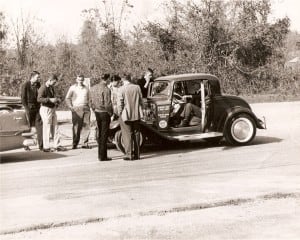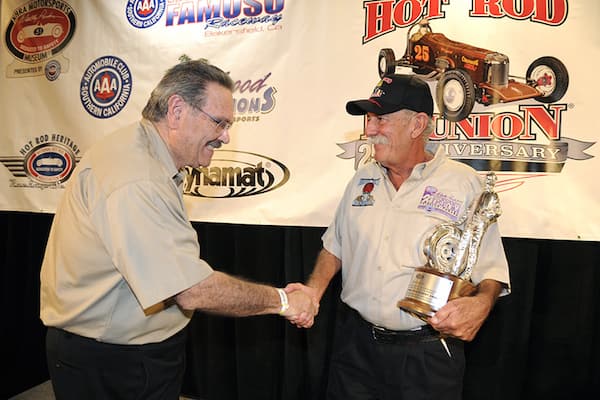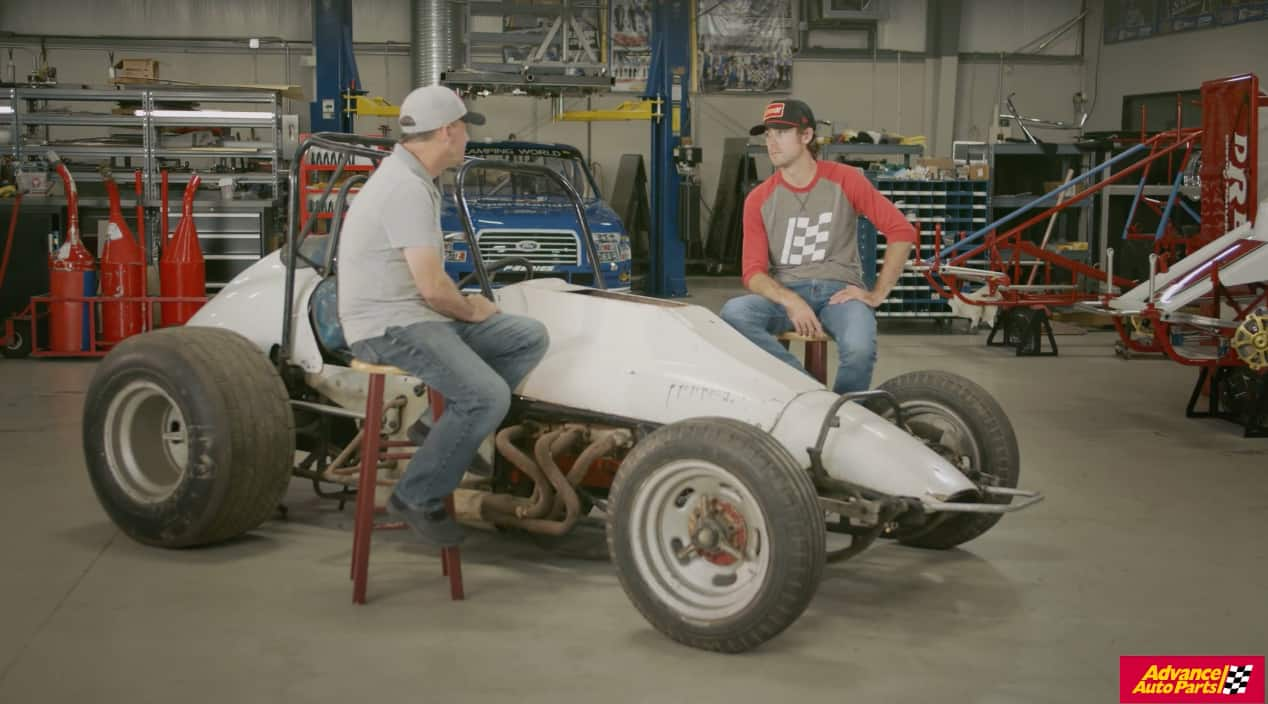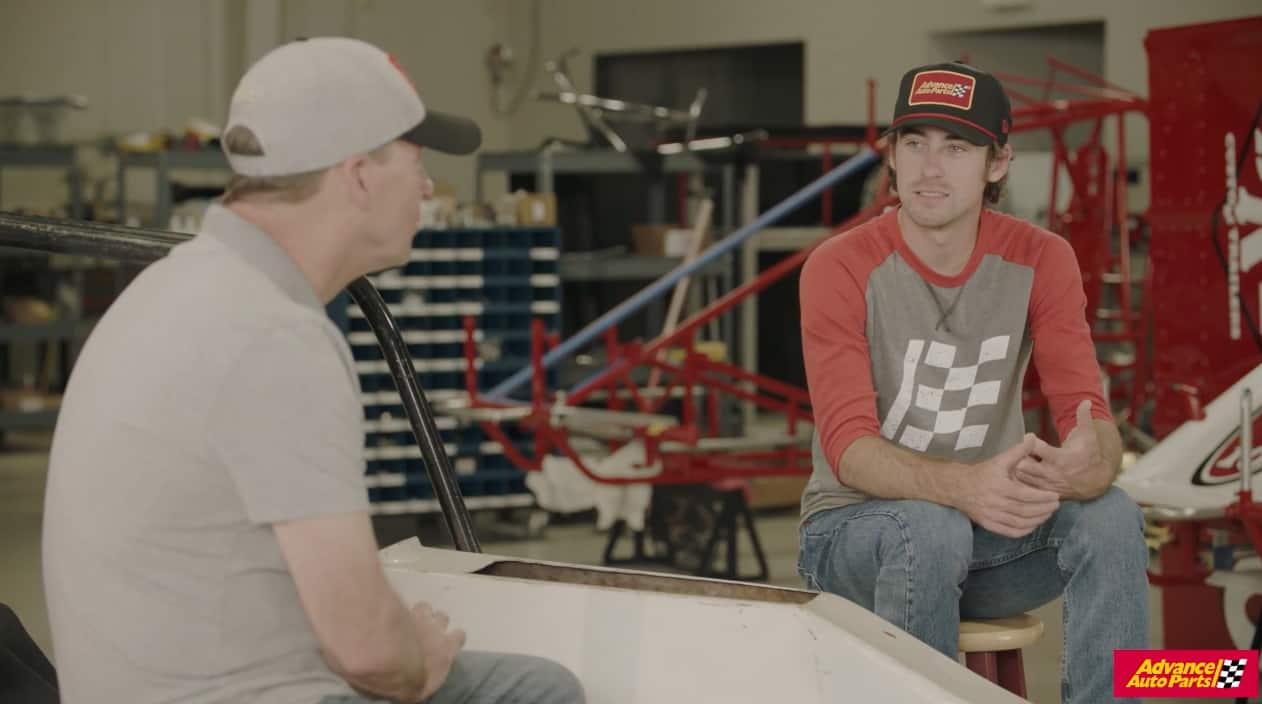 On day one, cars were invented. On day two, people started trying to figure out how to drive them faster–or so it seems. This urge for speed has been satisfied, at least for some car lovers, through drag racing and, today, Advance Auto Parts sits down with Tommy Lee Byrd to hear about his lifelong relationship with drag racing cars.
On day one, cars were invented. On day two, people started trying to figure out how to drive them faster–or so it seems. This urge for speed has been satisfied, at least for some car lovers, through drag racing and, today, Advance Auto Parts sits down with Tommy Lee Byrd to hear about his lifelong relationship with drag racing cars.
“My love for drag racing,” he shares, “started when I was a very young child. My dad did custom paint work for a living, so he always had cool cars at his shop, which was just a few feet away from our home. Many of these vehicles were drag cars, and he had a few drag cars of his own through the years. I guess the most influential car was my dad's old Henry J Gasser, which he called Dr. Feelgood.”
Tommy Lee’s love for drag cars led him to digging up the history of older ones in his home town of Dayton, Tennessee. This fascination led him to numerous defunct tracks in the tri-state region of Southeast Tennessee, Northeast Alabama and Northwest Georgia. “It quickly became a hobby,” he says, “to visit the remains of these tracks and figure out the history by contacting former racers. I got the idea to write the book on this subject, thanks to a simple conversation with a friend, but it quickly turned into the real deal when I pitched the idea to CarTech Books.”
The appeal of drag racing
In some ways, the attraction to this activity is very simple: “Drag racing appeals to a certain breed of car guys,” Tommy Lee says, “and I’m glad to be one of them.”
In other ways, though, the appeal is difficult to explain. “I guess, he adds, “it's mainly the uncertainty that you feel when the cars roll into the staging beams, just before launch. There are so many factors that go into drag racing–the races may be short in terms of time and distance, but a million things pass through a driver's mind during a run.”
When asked about the role of nostalgia in the love of drag racing, Tommy Lee says that “the only thing that remains the same as the old days is the fact that the cars theoretically go in a straight line. So many changes have taken place, and it has unfortunately taken the fun out of many forms of drag racing–especially the professional side of the sport, where corporate business takes precedent. Thankfully, the nostalgia movement has brought back a number of vintage cars and racers, and it has sparked a lot of interest in the good ol' days.”
More Q & A with Tommy Lee Byrd
What is your involvement with drag racing?
Tommy Lee: My involvement is the cheapest possible avenue: photography. I don't have to spend money on racing fuel, slicks or engine maintenance, but I still get to hang out at the track and I get the best seat in the house for all the action. I'm sure that, someday, I'll get behind the wheel and have some real fun but, for now, I have enough on my mind as it is. I do have a few project cars that will likely see some moderate track time, including a '64 Corvette coupe, a '67 Camaro and a '64 Lyndwood front engine dragster.
What was the best part of writing Lost Drag Strips: Ghosts of Quarter-Miles Past?
Tommy Lee: Without a doubt, the best part was talking to former racers, who had experiences at many of the tracks featured. It was incredible to hear the stories and get a feel for how much fun it was to drag race in the '50s, '60s and '70s. I am far too young to have been a part of the heyday, so talking to the racers definitely allowed me to step back in time and enjoy the memories, even though they belonged to someone else.
What was the hardest part of writing the book?
The research was extensive and time-consuming, so that made it quite difficult, when you consider that books of this nature are set up on a deadline. It was also difficult to leave some track features out of the book but, due to page and time constraints, many tracks just didn't make the cut. That might be a good excuse to start gathering material for a sequel. We'll see about that.
What is your favorite story from the book (or at least one of your favorites!)?
One guy lives about 20 minutes from my house, and I randomly called him up to talk about drag racing, in an effort to dig up some more info and pictures. I'd never met him or spoken to him previously. He opened up to me about his drag racing days, and let me look at his collection of Mopar stuff, which includes a Plum Crazy Purple Hemi 'Cuda drag car that he campaigned locally in the Super Stock ranks. He stopped racing in the early '70s and parked the 'Cuda in his basement, where it remains untouched.
What was your favorite drag strip that you visited while doing research for the book?
Hudson Drag Strip, hands down, gets my vote. Thanks to a friend who knew the family who operated the track, I found the place and got access to the property. It looks like the track crew literally decided to walk away and leave this place untouched for 20 years. It was a really cool track when it was operational, as it was built in the hills of North Carolina, and had a very steep shutdown area. I enjoyed roaming around the property to see all of the stuff the owners left behind when it closed in 1994.
Editor's note: Got any good stories of your own to share? Feel free to tell us about them here. In the meantime, visit Advance Auto Parts for a good deal today.








